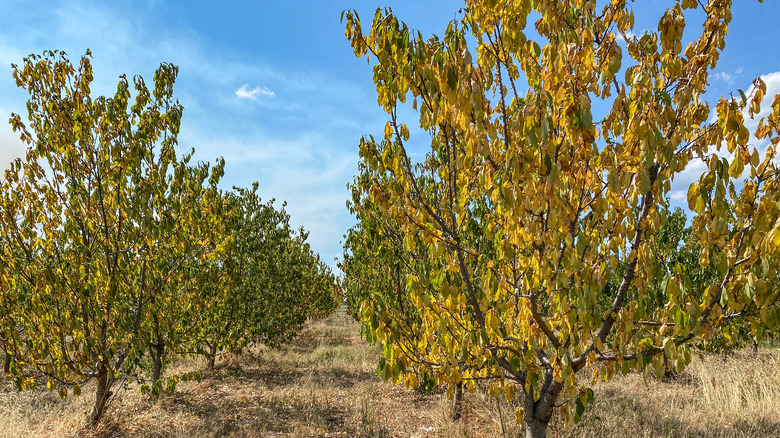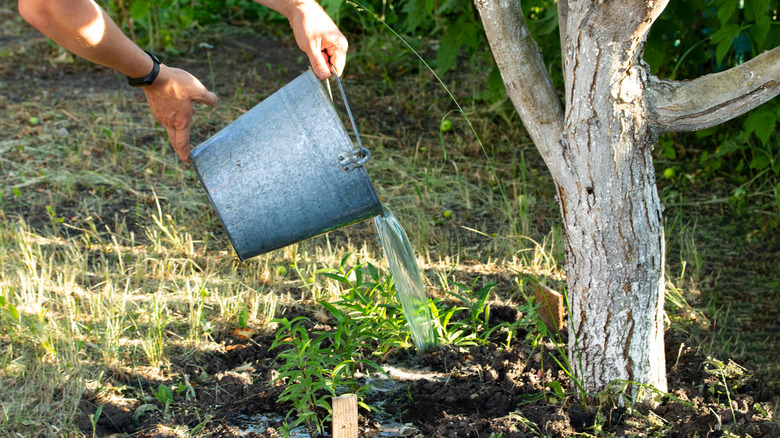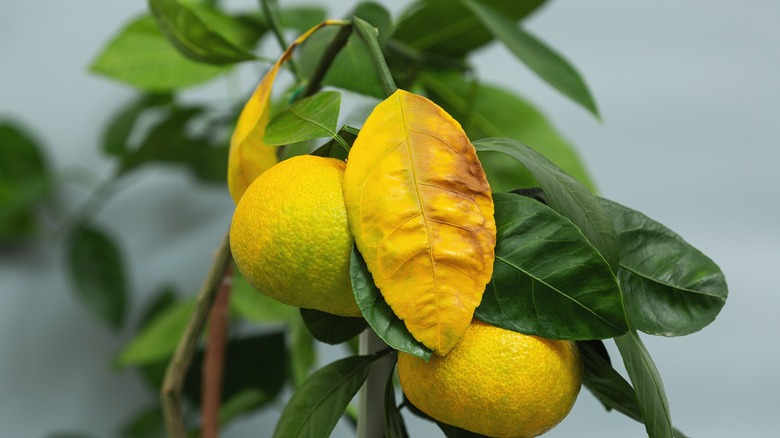Why The Leaves On Your Fruit Tree Are Turning Yellow (And What To Do About It)
Having fruit trees in your backyard can be a marvelous experience. During the first signs of spring, the glorious blossoms can bring vibrant beauty and color to your outdoor space. Or, in the summertime, the green foliage seems to just bring everything to life. But perhaps the greatest benefit of having them around is the sweet dangling fruit they produce that can bring a bountiful harvest to your yard later on in the season. With all the perks, it can be quite alarming if a problem starts to appear. A common one on fruit-bearing trees is yellowing of the leaves — it can be both unsightly and concerning, as you anxiously wonder if your gorgeous fruit tree is possibly sick.
There are a number of reasons the leaves can start to turn yellow, from nutritional imbalance to environmental stresses to a possible disease that has taken hold. On the other hand, the issue can be rather simple and correctable, like your tree is not getting enough water. When assessing your tree, you will want to consider the type of fruit tree you have. Most often the problem can be reversible and fixed by addressing the primary cause, which hopefully gives you some peace of mind. Let's get to the reasons so you can restore your tree's health!
Environmental stressors and lack of water
Excessive heat or prolonged droughts can cause quite a bit of stress on trees and bring about problems two-fold. For one, after several weeks of strain, your fruit trees will go into survival mode by redirecting resources away from the leaves as a way to conserve water. This will result in a yellowing appearance on the foliage. To take it a step further, a long dry spell of weather can cause your tree to become dehydrated — likewise, in this case, the leaves will start to drop and change color too because the tree will have a harder time taking up essential nutrients from the ground. The good news here is the solution at hand is really rather simple and obvious — your tree needs to be watered.
A good rule of thumb is to give your tree a good soak when the top 8 to 10 inches of soil surrounding it is dry. A good way to determine this is by trying the screwdriver method — push a screwdriver into the ground near the tree's dripline, and if the soil is hard, you likely need to water your tree. You can try this bucket hack that will cut your watering time in half. Adding a layer of mulch around your fruit tree can also help preserve moisture during the hotter months.
Fruit tree may have nutrient deficiency
Another possible reason that the leaves on your fruit tree are turning yellow is a nutrient deficiency. This is not as scary as it sounds and often can be reversed by feeding the soil. In this case, yellowing leaves form from a lack of manganese, zinc, or iron, which are all essential to keeping your tree healthy. For example, interveinal chlorosis is a common problem among fruit trees and occurs when there's a lack of iron which is fundamental to photosynthesis. A good sign of it is the leaves turn yellow, but leaf veins remain green. If a nutrient deficiency is the culprit, the next steps will include testing the soil to determine specific needs and adding a fertilizer with a balancing formula which should perk up your tree.
It should be noted that in some cases, yellowing of leaves is quite natural. During a fruit tree's natural life cycle, it removes nutrients from spent leaves to feed new growth, so the older yellowing leaves will fall naturally. In this case, as long as you notice new growth your tree is probably fine!


